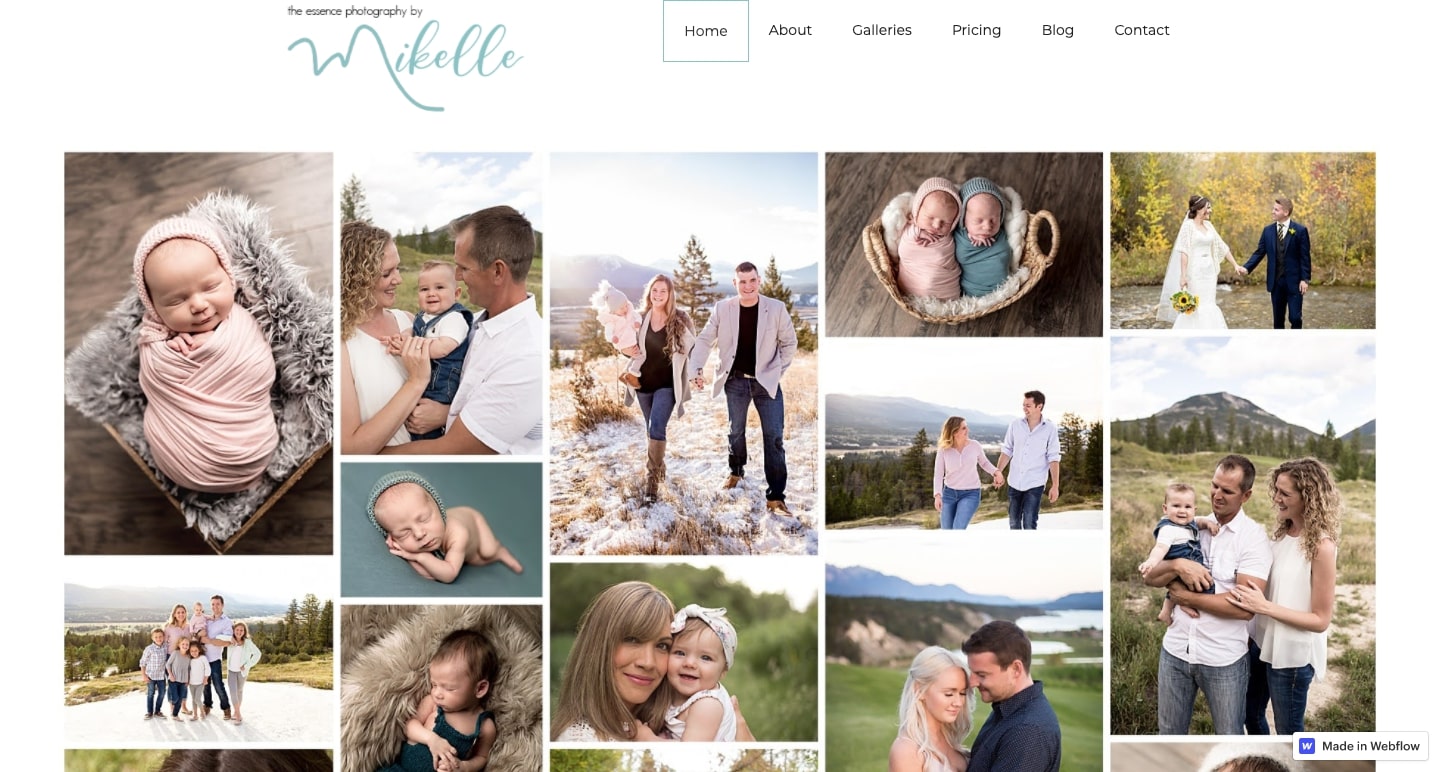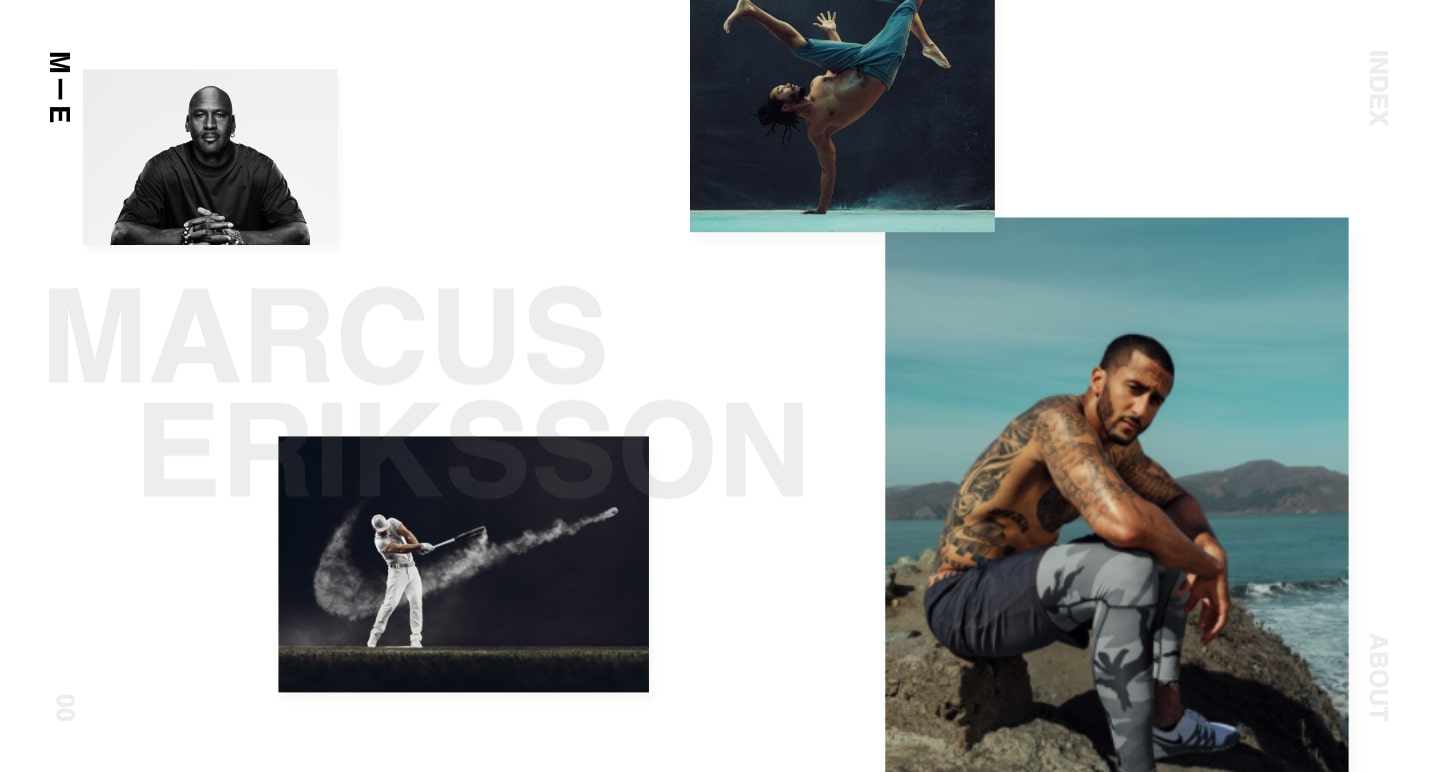If you’re a photographer, a great photography portfolio website to showcase your work is essential.
A photography portfolio website gives you a channel for getting your photos out there, connecting with others, and landing clients. It can be hard to differentiate yourself from all the other photographers out there, but an online portfolio empowers you to highlight your unique skills and talents.
Let’s take a look at the steps every photographer should follow when putting together a personal portfolio.
Identify the goals for your photography portfolio
First, it’s important to determine the purpose of your photography portfolio website before you start creating it. It’s okay if your ambitions don’t go beyond having a space where friends, family, and others can view your work. But if you aspire to be more than a hobbyist, you need to define your objectives and figure out how your website will help you meet those goals.
When creating a professional portfolio, ask yourself these questions:
- Who is the target audience you hope to reach and what type of prospective clients do you want to work with?
- What type of photography do you want to do more of?
- How do you want to market yourself and communicate your own personal brand?
A strong photography portfolio needs to not only display your talents but also have a clear strategy behind it.
Communicate your expertise
There are many different fields of photography. Maybe you love photographing weddings or snapping artsy shots of food. Or, you might prefer photographing natural landscapes or enjoy the challenge of wildlife photography. Whatever your creative pursuit, your online portfolio needs to show off the work that best communicates your strengths and vision.

This online photography portfolio for The Essence, built with Webflow, starts with a staggered grid of gorgeous wedding shots, swaddled infants, and joyful portraits. In each of these pictures, the viewer immediately feels the warm and homey style of the photographer, and have a clear understanding of the work she does.
When building your own portfolio — think about curating work that overall best represents who you are and how you want potential clients to perceive your work
Be consistent
All of your own work should show a similar sense of lighting, color, composition, focus, and subject matter. Any images that seem a bit blurry, have a weird white balance, or otherwise fall short in terms of quality should be left out.
Being a professional photographer means not only taking high-quality photos, but also knowing how to edit them. Your photo editing style becomes part of your artistry — it’s as important as the subject matter you shoot. Photoshop or similar photo editing software will help you polish and fine-tune your images.

This website for professional photographer and art director Julia Johnson shows a strong sense of cohesion from one image to the next. She favors vibrant colors, and taking photos with a high fashion aesthetic. Make sure the photos in your own photography portfolio consistently communicate your own artistic sensibilities.
Let your photos do the talking
We’ve all heard the writing maxim, “show, don’t tell” and this still holds true when it comes to photography portfolio design. Potential clients don’t want to read through huge chunks of copy, instead they want to see what you capture through your camera’s lens.
There are certainly places to include a bit more writing, like on your biography page or through a blog, but try and keep the copy light on the sections that feature your work.
Create your layout
You’ll find most photography websites take a more minimal approach in their visual designs. Just as the frame around a printed photograph adds a subtle border, the digital space around your images should provide a similar sense of neutrality. Anything extra you add while building your portfolio like interactions and transitions shouldn’t take the attention away from your own work.
This online portfolio from Marcus Eriksson, a professional photographer based in Vancouver, uses plenty of negative space along with muted background colors, allowing visitors to view the work without distractions. This is also worth checking out for the animations and interactions, which never get in the way, but only add to the smooth and engaging user experience.

One of the easiest ways to make your photography portfolio is to start with a template. Webflow offers a variety of photography website templates, to give you a head start in getting your own personal website up and running.

Build websites that get results.
Build visually, publish instantly, and scale safely and quickly — without writing a line of code. All with Webflow's website experience platform.
Start out strong
Potential clients want to see what you're capable of right away. A great way to do this is by starting off your portfolio with an attention-grabbing hero image. You can then follow it immediately with the other photos that you want to showcase.
This website for the Swiss professional photographer Marcel Dubacher starts off with a breathtaking and interactive hero shot of the Alps. A short scroll down reveals more sprawling and gorgeous landscape shots of mountains. Within the first moments of landing on this website, we see his well-defined aesthetic of high contrast, black and white landscape photography.

Keep your photography website updated
The best way to get repeat visitors to your professional photography portfolio is to add fresh images. People will want to come back to check in on what you’ve been up to. You want to show that you’re active as a professional photographer with a photo portfolio that always has something new to see.
It can be a challenge to manage all of the images that make up a digital portfolio. Using a content management system (CMS) like Webflow CMS makes it easy to edit or change up dynamic content. If you’re going to include a large selection of photos, you’ll definitely want to use a CMS to make your job easier.
Don’t overload your portfolio with too many photos
It’s tempting to want to put every photo you’ve ever snapped up on your online photography portfolio. But flooding someone with an unending scroll of images makes it hard for any of them to stand out. When too many photos are featured together, they tend to blend into one undifferentiated block.
Include a blog
We mentioned how you should keep your portfolio lean in terms of text, but that doesn’t mean you have to forego any sort of writing. Having a blog is one way to expound upon your work, to talk about photography topics that excite you, and to share photography tips. A blog can also do wonders in terms of search engine optimization (SEO). Web crawlers love websites that continue to post new content, and a blog may give you a bit of an organic boost in search results related to photography.
New York fashion photographer Mark Delong not only has a splendid online portfolio, but his blog gives a bit of background and insights into how he approaches his work.

Get an outside perspective
Anyone who has spent a great deal of time and effort on a personal portfolio knows how hard it is to assess its merit once it’s up and running. When you get a second opinion, you can surface design issues that you may have overlooked.
Have family or friends whose opinions you trust to go through it. Share your portfolio site on social media and ask for feedback. Seek out other professional photographers who can give you their insights on what you have up, and give you constructive notes on what you may need to change.
Let your photography be seen
It’s not uncommon for someone’s side gig to turn into a full-time profession. For any photographer hoping to turn their talents into their primary career, a portfolio website is essential in bringing visibility to your work and landing paid gigs.
Whatever your field of creativity, we love seeing people using Webflow to help them pursue their entrepreneurial dreams. If you have created a portfolio for your creative work, feel free to post it in the comments below.







.jpeg)























